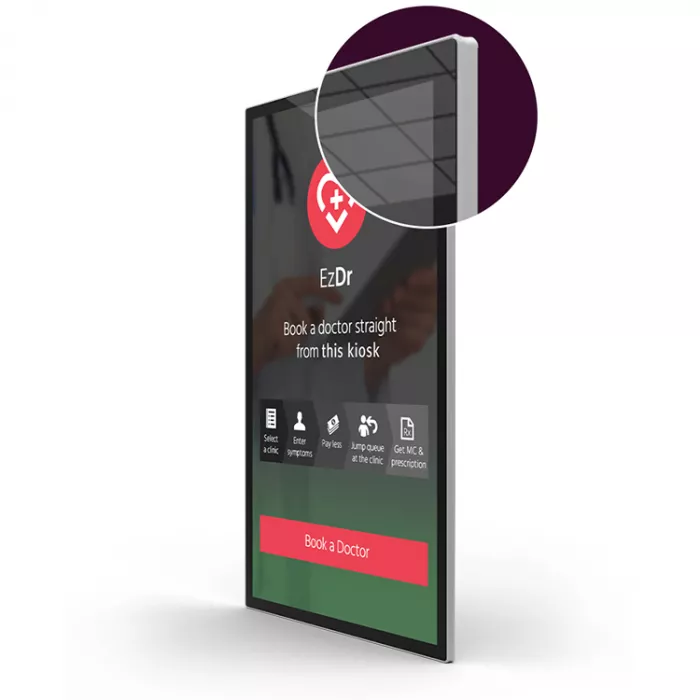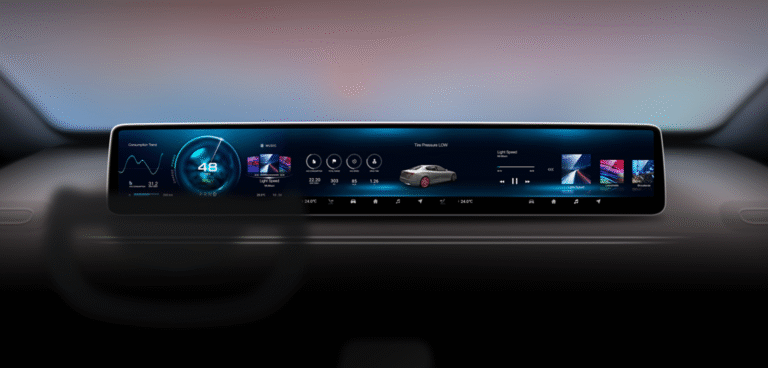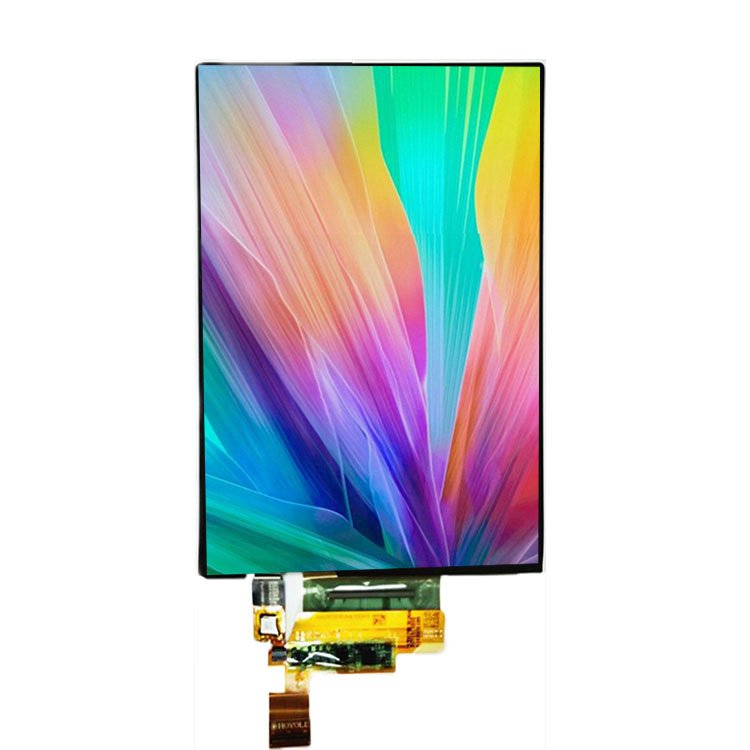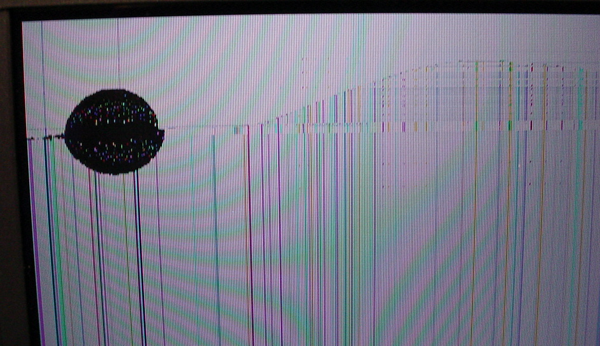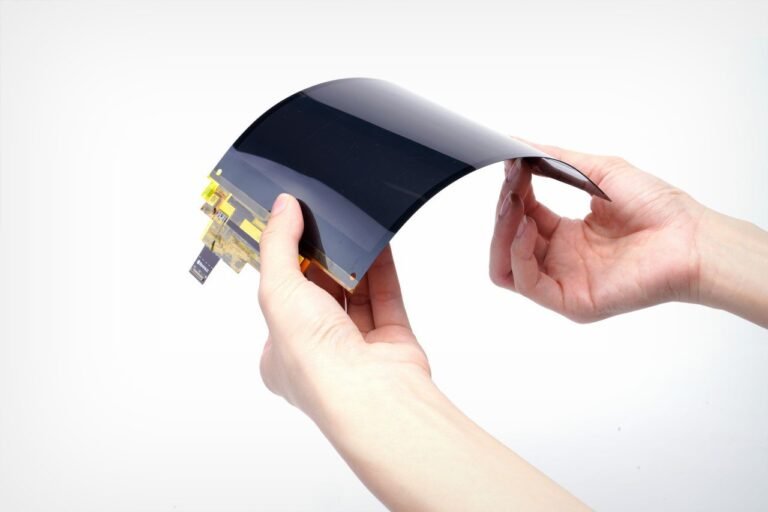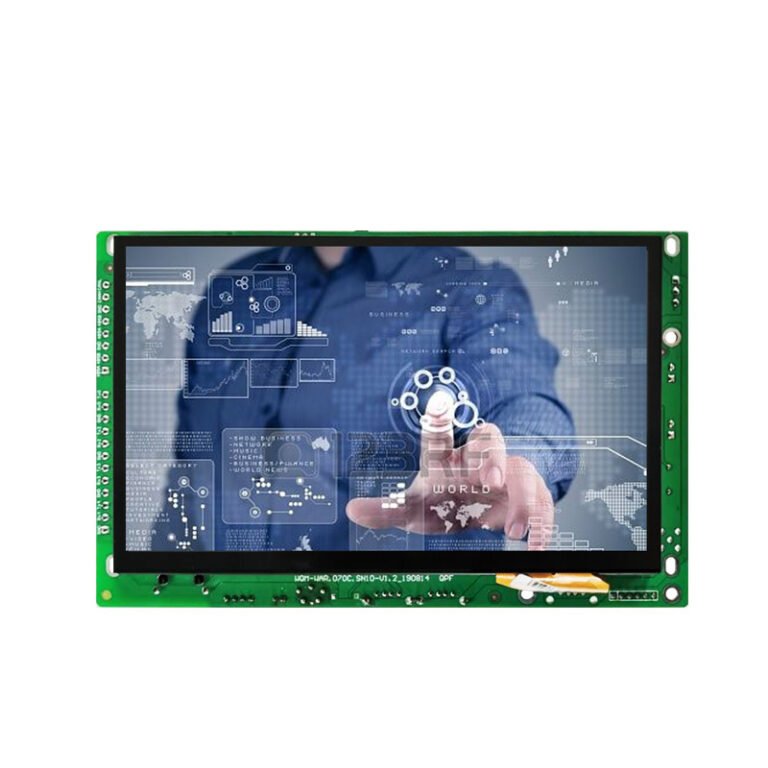1. What is TFT LCD?
TFT LCD (Thin-Film Transistor Liquid Crystal Display) is a subtype of LCD technology that has become the industry standard in consumer and industrial electronics. It utilizes an active matrix of thin-film transistors to enhance image quality and response times. When comparing TFT vs LCD generally, remember that TFT is a more advanced version of standard passive-matrix LCDs.
KKey Benefits:
- Sharp images and fast response times
- Affordable and widely available
- Energy-efficient in many applications
Limitations:
- Limited viewing angles—colors shift when viewed from the side
- Lower contrast in dark scenes due to reliance on backlighting
Common Uses:
- Smartphones
- Televisions
- Industrial monitors
- Vehicle dashboard displays
Uma comparação exaustiva dos tipos de painéis LCD: TN, VA e IPS
2. What is OLED?
OLED (Organic Light Emitting Diode) is a display technology that differs from LCDs by eliminating the need for a backlight. Each pixel emits its own light, allowing for incredible image quality and slim form factors. When comparing TFT vs OLED, OLED often wins in visual performance but costs more.
Key Benefits:
- True blacks—pixels can turn off completely
- Exceptional contrast and color accuracy
- Wide viewing angles with no color shift
- Ultra-thin design
Limitations:
- Higher manufacturing cost
- Risk of burn-in with static content over time
Common Uses:
- High-end smartphones
- Premium televisions
- Dispositivos vestíveis
- AR/VR displays
Milhares de produtos estão disponíveis no nosso catálogo.
Descubra a nossa vasta gama de produtos, incluindo LCD-TFTs, ecrãs gráficos e alfanuméricos OLED, LCMs, ecrãs de papel eletrónico, leitores de códigos de barras (incorporados, portáteis, de montagem fixa), monitores industriais, computadores industriais (placas de suporte, COMs e SOMs, sistemas incorporados, computadores de painel HMI, SBCs), ecrãs tácteis capacitivos e resistivos e acessórios (kits de desenvolvimento, conectores, controladores, fitas FPC/FFC, conectores ZIF).
3. What is LED (LED-Backlit LCD)?
Often misunderstood, “LED” in most contexts refers to LED-backlit LCDs. These displays incorporate LED lights as the backlight source behind a standard LCD matrix. In discussions of TFT vs OLED vs LCD, LED usually fits under the LCD umbrella but with enhanced brightness.
Key Benefits:
- Brighter than older CCFL-backlit LCDs
- Thinner and more energy-efficient
- Cost-effective with decent performance
Limitations:
- Still reliant on backlight, leading to less deep blacks
- Color accuracy and contrast vary by panel quality
Common Uses:
- Budget televisions
- Computer monitors
- Digital signage
- Laptops
| Caraterística | o TFT LCD | OLED | LED (Backlit LCD) |
|---|---|---|---|
| Image Quality | Moderate contrast, good colors | High contrast, true blacks | Bright, moderate contrast |
| Brilho | Good, backlight dependent | Excellent, self-emitting pixels | Very bright, due to LED backlight |
| Ângulos de visualização | Limited, color shifts at angles | Wide, no color distortion | Better than TFT, less than OLED |
| Espessura | Thicker, needs backlight | Very thin, no backlight required | Thin, depends on backlight config |
| Custo | Acessível | Caro | Budget-friendly |
| Eficiência energética | Moderado | Highly efficient | Efficient, but lower than OLED |
| Aplicações | Smart devices, monitors, medical | Phones, TVs, wearables | TVs, monitors, digital signage |
Conclusion: Which Should You Choose—TFT vs OLED vs LCD?
When comparing TFT LCD vs LCD more broadly (including OLED and LED-backlit types), your best choice depends on your priorities:
- Choose TFT LCD for a balance of affordability and performance, especially for industrial displays or devices with frequent use.
- Opt for OLED if superior contrast, perfect blacks, and sleek design matter more than cost.
- Opte por LCDs com retroiluminação LED quando são necessários alto brilho e eficiência energética a um preço acessível.
Por fim, compreender os prós e contras de TFT vs OLED vs LCD ajuda a tomar decisões mais inteligentes no desenvolvimento ou aquisição de produtos.
FAQ: Perguntas Frequentes Sobre TFT vs OLED vs LCD
Q1: OLED é melhor que LCD?
R: Sim, especialmente em qualidade de imagem. OLED oferece pretos mais profundos e melhor contraste. No entanto, TFT LCDs são mais rentáveis e duráveis para certas aplicações.
Q2: LED é o mesmo que OLED?
R: Não. LED geralmente refere-se a uma tela LCD com retroiluminação LED, enquanto OLED é uma tecnologia de pixels autoiluminados.
Q3: Por que OLEDs sofrem com burn-in?
R: Pixels OLED podem degradar-se se imagens estáticas permanecerem por tempo prolongado. Dispositivos modernos implementam recursos para mitigar esse problema.
Q4: TFT LCDs podem igualar a qualidade de imagem do OLED?
R: Não exatamente. TFT LCDs baseados em IPS melhoraram significativamente, mas OLED ainda lidera em desempenho visual.
Q5: Qual tela é melhor para uso externo?
R: LCDs com retroiluminação LED geralmente fornecem brilho superior, tornando-os ideais para ambientes externos.
Recursos de Referência:



